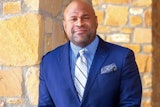When Dr. Claibourne Smith left Delaware State University’s board of trustees in the summer of 2008 to become interim president of the school, he knew he had a task ahead, having run complex, multimillion-dollar companies for his old employer, the E. I. DuPont de Nemours Company.
With a new president, Dr. Harry L. Williams, who began his presidency earlier this month, Smith returned to his volunteer trustee post with a new appreciation for the challenges presidents and boards of trustees face.
“It is remarkable how much you learn and how much you know you thought you knew as a board member and didn’t,” says the 70-year-old retired vice president of technology at DuPont, reflecting on his tenure at the helm of the 3,600-student school run on an $80-million annual budget.
Since returning to the college’s 15-member board, Smith says, his fellow trustees have seen “a different person. We’ve (the trustees) got to step it up,” he says. “There’s a shared role we’ve got to play that we haven’t played well in the past. If we’re going to do the job well, we have to change,” he says, adding he now knows “I didn’t ask several key questions I should have asked” in the past.
Smith says trustees need to have a “clear set of goals and objectives with appropriate measures,” in order to “have confidence the organization is truly carrying out what you thought it was carrying out. The burden is really on the president of the university and chair of the board to clearly have that understanding. That way you go to a board and they have the facts,” needed to make decisions.
Trustees must “be a lot more aggressive in mapping out where we are going and what we are going to do. Boards need to ask questions,” he says. “Not be disruptive but to ask questions. Sometimes you have to convince board members there are no dumb questions. It’s easy to paint a rosy picture to get approval of what you want instead of turning things inside out.”
Smith says he expects to lose some fellow board members as he urges them to “step up. They’ve seen a sample of that already,” says Smith, who chaired the Delaware State board from 1997 to the summer of 2008 when he stepped in as interim president.
Having played both roles now – college president and university trustee – Smith says he has gained a new world of knowledge he feels would serve his own and other college trustees well. A few key points:
- When searching for a new president, trustees need to put in the “time, effort and energy,” needed to identify the right person for the job. “There are no convenient short cuts. If you select well, you will have a person who will absolutely engage the board,” says Smith.
- Have a clear line of demarcating between the board involving itself in governance and operations. “Those lines tend to blur and it’s important they don’t,” he says.















